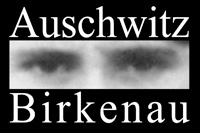




Sub-camps
Over the years, Auschwitz had almost 50 sub‑camps. The largest of them had extensive administrative structures, separate hospital barracks, showers and even small crematoria. In the smaller ones, prisoners were locked up for the night in rooms or cellars—there were no fences or guard towers there and meals were delivered from the main camp. The majority of prisoners were employed in the armaments and extractive industries, or agriculture. At the beginning of 1945, they held 35,000 men and women prisoners, more than Auschwitz I and Birkenau combined (31,000).
